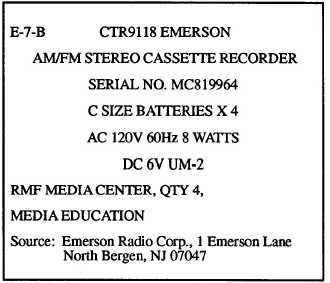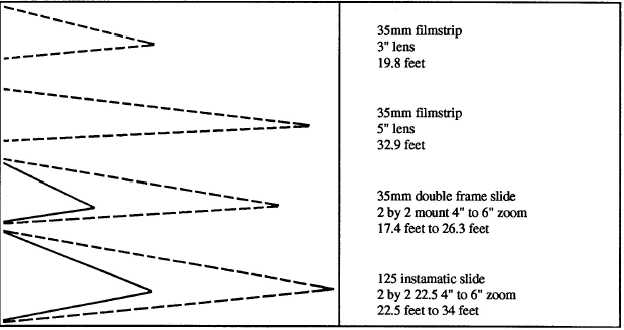make smaller images. Figure 2-14 shows the
distances three different projectors should be placed
from a 70-inch screen in order for the image to fill the
screen. Figure 2-15 provides additional information
concerning lens length, projector distance from the
screen, and screen size for several types of projectors.
Patch cords. Sounds are transferred from one
sound source to a recorder by means of a patch cord.
This method does not pick up foreign noise as it
would if a microphone were used. In a patch cord, the
wire is shielded so that it has at least one conductor
surrounded with insulation in the form of a braided
wire shield.
Duties and Responsibilities
One of your responsibilities for your RMF’s
media center will be to publicize that audiovisuals are
available for use by authorized persons. An up-to-date
RMF’s media center should have a variety of
audiovisual materials and equipment in addition to
the printed media.
CARD CATALOG.—Some of your duties may
involve the maintenance and use of the card catalog.
The card catalog, as shown in the following sample,
will tell you if a specific item is available. It will also
provide a number to tell you where to find it. Having
a card catalog for your RMF’s audiovisual
equipment and materials will help you maintain an
inventory of the media center. In most media
centers, green cards are used for audiovisuals to
distinguish
them
from
the
white
title
cards typically used for printed media. Notice the
following sample:
Notice the number E-7-B in our sample. The
notation E-7-B stands for a piece of equipment (E)
that is maintained in area 7 and located in cabinet B.
This number should also be placed on the equipment
item itself. In your card catalog, all audiovisual
devices and types of media should be labeled in this
manner. The letter designations used for the various
media are as follows:
FS — Filmstrip
RFS — Record
R — Recording
Figure 2-14.—Distances from a projection screen.
2-23



